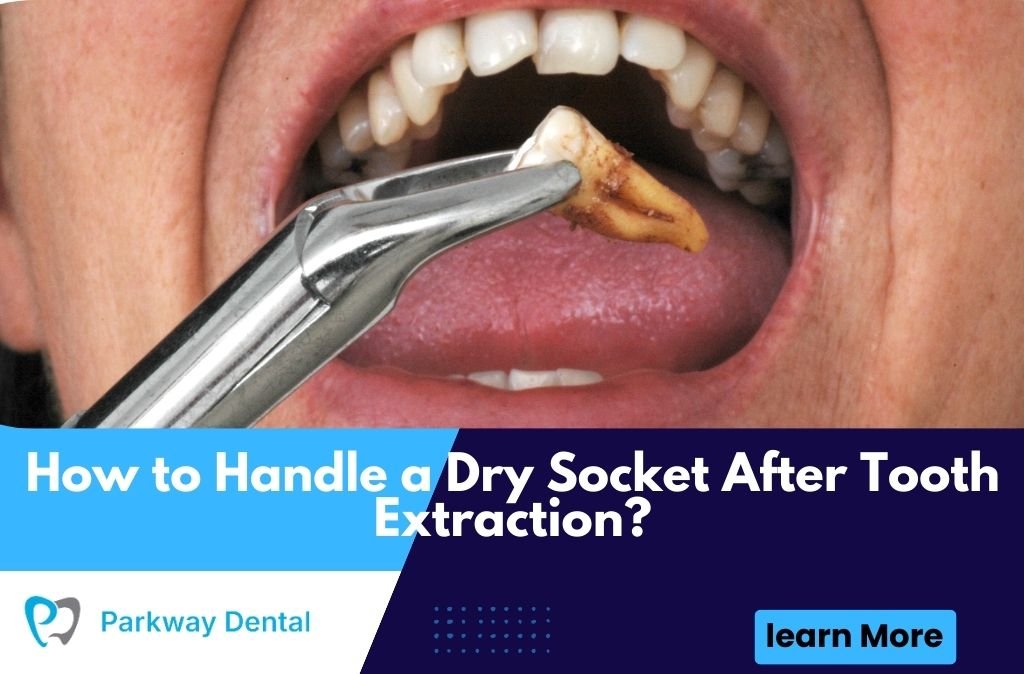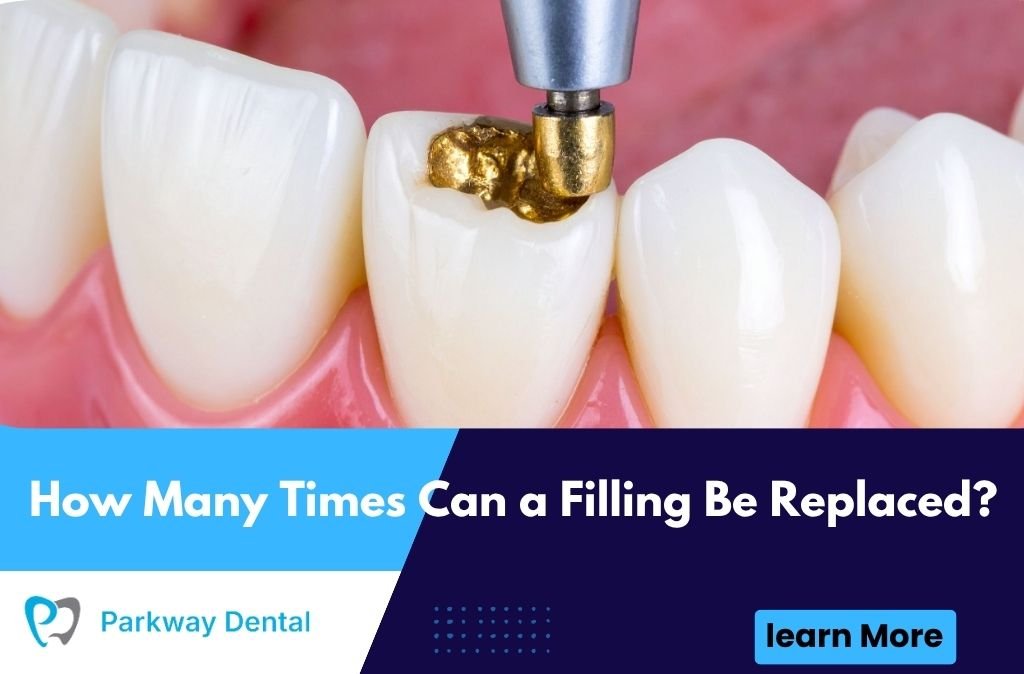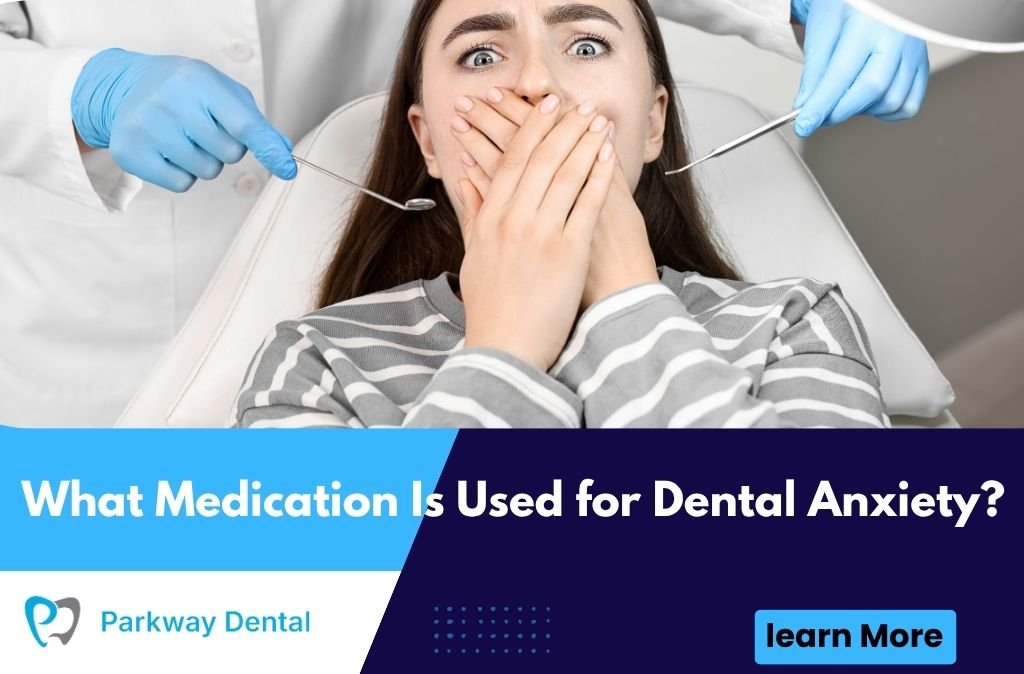A tooth extraction is one of the most common dental procedures, often performed when a tooth is severely decayed, damaged, or impacted. While most extractions heal smoothly, some patients experience a painful complication called dry socket.
If you’ve recently had a tooth removed and are struggling with severe pain that radiates to your ear, jaw, or temple, you may be dealing with this condition. But don’t worry—this guide will walk you through everything you need to know about how to handle a dry socket after tooth extraction.
What Is a Dry Socket After Tooth Extraction?
A dry socket (also known as alveolar osteitis) occurs when the blood clot that normally forms in the socket after extraction either dissolves too soon or never develops properly. This clot is essential for protecting underlying bone and nerves while the gum tissue heals. Without it, the exposed area becomes painful and prone to infection.
Signs and Symptoms of a Dry Socket
Recognizing the symptoms early helps you take action quickly. Common signs include:
- Severe pain that develops 2–4 days after extraction.
- Pain spreading to the ear, eye, or neck on the same side.
- An empty-looking socket where the clot should be.
- Bad breath or unpleasant taste in the mouth.
- Visible bone inside the socket.
If you notice these symptoms, it’s important to contact your dentist immediately.
Causes of Dry Socket After Tooth Extraction
Not everyone develops a dry socket, but certain factors increase your risk:
- Smoking or using tobacco.
- Drinking through a straw (suction dislodges the clot).
- Poor oral hygiene after extraction.
- Complicated or surgical extractions (such as wisdom teeth).
- History of dry socket in previous extractions.
- Hormonal changes (birth control pills may increase risk).
Why a Dry Socket Needs Immediate Attention
A dry socket isn’t just painful—it delays healing. The exposed bone is vulnerable to infection, which can spread if not treated. Quick professional care helps reduce pain, prevent complications, and speed up the recovery process.
How to Handle a Dry Socket After Tooth Extraction at Home
Managing a dry socket at home involves easing pain while protecting the healing site. Apply a cold compress in the first 48 hours, rinse gently with warm salt water after meals, and use over-the-counter pain relievers. Avoid smoking, alcohol, and straws to prevent further irritation and promote faster healing.
Apply a Cold Compress
During the first 24–48 hours, applying a cold compress to the outside of your face can help reduce swelling and numb discomfort.
Warm Salt Water Rinse
After the first day, gently rinsing with warm salt water can help cleanse the area and prevent infection. Be careful not to swish too hard, as this can irritate the socket.
Over-the-Counter Pain Relief
Non-prescription pain relievers like ibuprofen can help manage pain and inflammation until you see your dentist.
Avoid Aggravating the Socket
Stay away from smoking, drinking alcohol, or eating crunchy foods that may disturb the healing site.
Professional Treatments for Dry Socket Relief
When home remedies aren’t enough, your dentist can provide professional treatment:
Medicated Dressings
Your dentist may place medicated gauze or paste inside the socket to cover exposed bone and reduce pain.
Prescription Medication
Antibiotics may be prescribed if infection is suspected, along with stronger pain medications if necessary.
Gentle Cleaning
The dentist may carefully clean the socket to remove debris and promote healing.
Foods to Eat and Avoid with a Dry Socket
Eating the right foods supports recovery from a dry socket after tooth extraction. Soft options like yogurt, smoothies, and mashed potatoes are ideal. Avoid hard, spicy, or crunchy foods that irritate the exposed socket. Choosing soothing, room-temperature meals helps reduce pain and ensures proper healing without unnecessary discomfort.
Best Foods
- Smoothies, yogurt, and soups.
- Mashed potatoes, oatmeal, or scrambled eggs.
- Room-temperature soft foods that don’t require chewing.
Foods to Avoid
- Spicy or acidic foods that irritate the socket.
- Hard or crunchy foods that can cause trauma.
- Very hot foods and drinks that slow clot formation.
Preventing a Dry Socket After Tooth Extraction
While not every case can be avoided, you can lower your risk with these steps:
- Follow all aftercare instructions from your dentist.
- Avoid smoking or vaping for at least 72 hours.
- Do not use straws for drinking.
- Stick to soft foods in the first few days.
- Maintain gentle oral hygiene without disturbing the socket.
How Long Does a Dry Socket Last?
With treatment, most dry sockets begin improving within 24 hours and heal fully within 7–10 days. Without treatment, pain may persist and healing can take much longer.
When to Call a Dentist for Dry Socket
Seek immediate dental care if:
- Pain worsens after 2–3 days post-extraction.
- You notice exposed bone in the socket.
- Swelling spreads to the face or neck.
- You develop fever, chills, or pus near the extraction site.
Cost of Treating a Dry Socket in Massachusetts
The cost depends on the severity of the condition and treatment required. On average:
- Examination: $100–$200
- Medicated dressing: $50–$150 per visit
- Prescription antibiotics or pain relievers: $20–$100
Treating the issue promptly prevents higher costs associated with infections or complications.
Long-Term Outlook After a Dry Socket
The good news is, with proper treatment, a dry socket heals completely and doesn’t leave permanent damage. Once healed, you can resume normal eating and oral care routines without worry.
Conclusion
Dealing with a dry socket after tooth extraction can be painful and stressful, but the right care makes all the difference. By recognizing symptoms early, using effective home remedies, and seeking timely professional help, you can manage the condition and heal properly.
For expert treatment and guidance, always consult a trusted Dentist in West Roxbury, MA to ensure your recovery is smooth and complication-free.
FAQs
How common is a dry socket after tooth extraction?
Dry sockets occur in about 2–5% of routine extractions, but the risk is higher with wisdom teeth removal.
How long does a dry socket take to heal?
Most cases heal within 7–10 days with professional treatment.
Can I treat a dry socket at home?
Home remedies can ease discomfort, but professional care is necessary for proper healing.
What does a dry socket feel like?
Intense pain starting 2–4 days after extraction, often radiating to the ear or temple.
Can smoking cause dry socket?
Yes. Smoking is one of the leading causes of blood clot dislodgement.
Will antibiotics cure a dry socket?
Antibiotics may help if there’s infection, but they don’t replace the lost clot. Medicated dressings are usually required.
Is a dry socket dangerous?
While not life-threatening, untreated dry socket can delay healing and increase infection risk.






